- Register
- Log in
- Wishlist (0)
- Cart (0) You have no items in your shopping cart.
Quotes Available
Blog
Several signs can indicate a failing automotive air conditioning (AC) system
We've all been there — it's a hot day, and you desperately need your car's air conditioning to work. But alas, something is wrong. Your once trusty AC system is failing, and you're sweating in the driver's seat. But how can you tell if your AC system is on the fritz? We'll cover several signs indicating a failing automotive AC system and discuss how to diagnose and address these issues. So let's dive in!
Common signs of a failing AC system
Weak airflow - If you notice a decrease in the airflow coming from your vents, it could be a sign that your AC system is struggling. A clogged cabin air filter may cause this, a failing blower motor, or a damaged air duct. If the airflow is weaker than usual, it's time to investigate and address the issue.
Unusual noises - When your AC system starts making strange noises like clicking, rattling, or grinding, it could be a sign that something is wrong. These noises may indicate a problem with the compressor, the blower motor, or the fan. Please don't ignore these sounds, as they can lead to more significant issues down the road.
Foul smells - If you notice an unpleasant odor when you turn on your AC, it could be a sign of mold or mildew growth in the system. This can result from excess moisture in the evaporator coil or a clogged drain. Not only is this unpleasant for you and your passengers, but it can also pose health risks.
Inconsistent cooling - If your AC system cools your car inconsistently, it could be a sign of a problem. This might be due to a low refrigerant level, a malfunctioning thermostat, or a damaged compressor. Inconsistent cooling can lead to discomfort and frustration, so addressing the issue promptly is essential.
Leaking refrigerant - Refrigerant leaks can cause your AC system to lose its cooling efficiency. If you notice a pool of liquid under your car, it could be refrigerant leaking from the system. This can be caused by damaged hoses, seals, or connectors and should be fixed immediately.
Electrical issues - Flickering or unresponsive AC controls could indicate an electrical problem within the system. Wiring issues, a blown fuse, or a malfunctioning control module can all cause these problems. Identifying and fixing any electrical issues is crucial, as they can lead to further complications in your AC system.
Frozen evaporator coil - A frozen evaporator coil can prevent your AC system from cooling effectively. This can occur when there is insufficient airflow over the coil or when the refrigerant level is too low. If you notice frost or ice on your evaporator coil, it's time to address the problem.
Compressor problems - The compressor is the heart of your AC system, and if it's failing, your system won't be able to cool your car effectively. Symptoms of a failing compressor include poor cooling performance, unusual noises, and refrigerant leaks. If you suspect an AC compressor issue, it's essential to have a professional mechanic check it out.
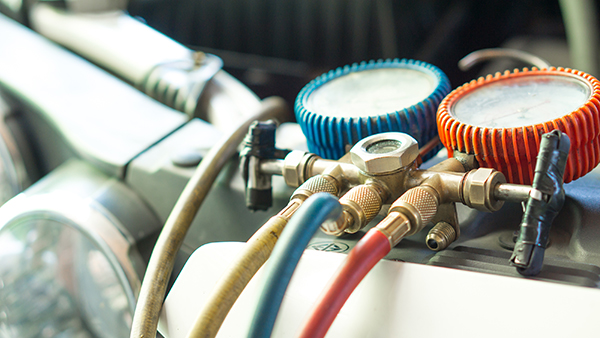
How to diagnose a failing AC system
Visual inspection
The first step in diagnosing a failing AC system is to conduct a visual inspection. Check for any signs of damage or leaks in the hoses, seals, and connectors. Inspect the cabin air filter and ensure it's clean and functioning correctly.
AC performance test
An AC performance test can help identify your system's cooling efficiency issues. By measuring the temperature of the air coming from the vents, you can determine if your AC system is working correctly or if a problem needs to be addressed.
Pressure test
A pressure test can help identify issues with your AC system's refrigerant levels. If the pressure is too low, it could indicate a leak or a problem with the compressor. If the pressure is too high, it could point to a blockage or a malfunctioning expansion valve.
What to do when your AC system fails
DIY fixes
Some common AC problems can be fixed with a bit of DIY know-how. For example, replacing a clogged cabin air filter or repairing a loose electrical connection can often resolve minor issues. However, it's essential to recognize when a problem is beyond your expertise and requires professional attention.
Professional repairs
For more complex issues, such as ac compressor failure or refrigerant leaks, it's best to seek the help of a qualified mechanic. They will have the necessary tools and expertise to diagnose and repair your AC system effectively, ensuring it's running smoothly and keeping you cool on the road.
Wrapping Up
A failing automotive air conditioning system can cause discomfort and frustration, but recognizing the signs of failure is the first step in addressing the issue. By being aware of symptoms like weak airflow, unusual noises, and inconsistent cooling, you can take immediate action to diagnose and repair any problems. Whether you tackle the issue yourself or seek professional automotive help, maintaining a well-functioning AC system is essential for your comfort and safety on the road. Contact our experts at Original Air and we'll help you get the parts you need to stay cool year round!
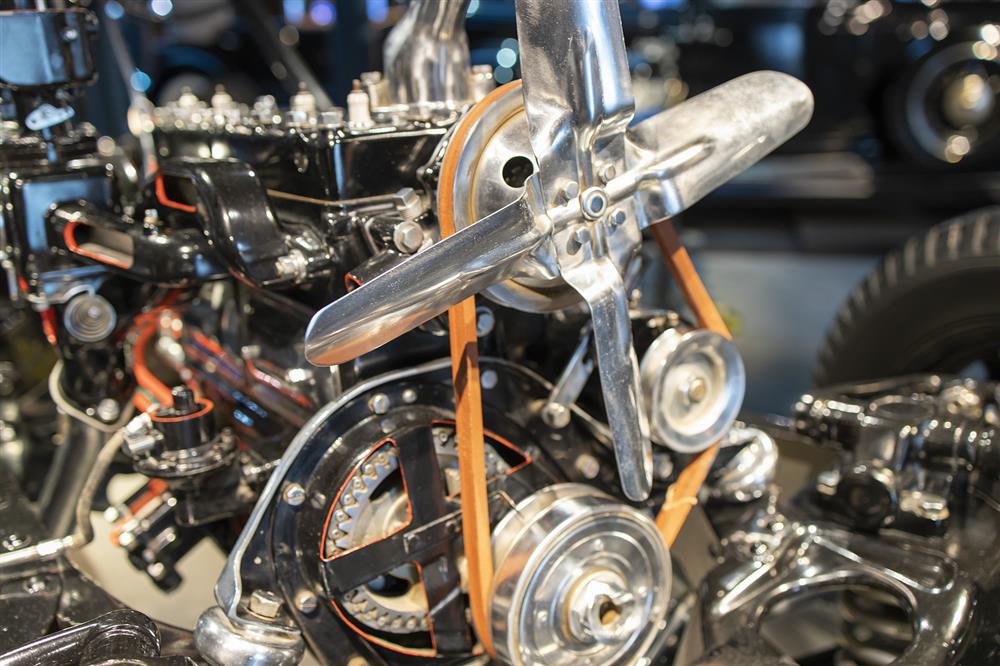
Classic cars are a passion for many car enthusiasts. It's a pleasure to drive, care for, and keep a classic cruiser, muscle car or classic truck in top-notch condition. However, when it comes to the cooling system of a classic vehicle, it can be a challenging task to choose between keeping a clutch fan or upgrading to an electric fan. We will compare both the clutch and electric fan options and provide guidance on which is better for your classic ride.
First let's breakdown the two options:
Clutch Fan: A clutch fan is a mechanical device that is bolted directly to the engine's water pump. It is a component that uses a thermostatic spring to engage or disengage the fan blades from the pulley according to the engine's temperature. When the engine is cold, the fan blades disengage, and the fan doesn't turn, allowing the engine to warm up faster. Once the engine reaches a certain temperature, the thermostatic spring engages the fan blades, and the fan begins to turn, pulling air through the radiator and cooling the engine.
Advantages of the clutch fan setup:
- It has a simple design and is relatively easy to install.
- It doesn't require any electrical connections, making it easier to maintain and troubleshoot.
- It is a cost-effective solution for cooling a classic car.
Disadvantages of the clutch fan:
- It uses engine power to operate, which can result in a decrease in fuel efficiency.
- It is more prone to failure than electric fans.
- It can create excessive noise and vibration.
Electric Fan: An electric fan, on the other hand, is an electrically powered device that uses a motor to turn the fan blades. It is usually mounted in front of the radiator and controlled by a thermostat or a fan controller. It can have one large fan, or two individual fans with the choice to run in parallel or independently.
Advantages of an electric fan setup:
- It provides consistent and reliable cooling.
- It consumes less engine power, resulting in improved fuel efficiency.
- It produces less noise and vibration.
- It can be controlled by a thermostat or a fan controller, making it more efficient.
Disadvantages of the electric fan:
- It requires electrical connections, which can be challenging to install.
- It is more expensive than a clutch fan.
- Does not have the factory OEM appearance.
Upgrading from a clutch fan to an electric fan can help a vehicle's AC system run more efficiently in several ways.
First, an electric fan is designed to work independently of the engine's RPM, which means that it can maintain a steady airflow through the radiator even at low engine speeds or when the vehicle is idling. This can help to reduce the temperature of the engine and the AC system, which in turn reduces the load on the AC compressor and improves its performance.
Secondly, an electric fan consumes less power from the engine compared to a clutch fan, which means that there is more power available to run the AC system. This can lead to improved AC performance, especially when the vehicle is idling or driving at low speeds.
Additionally, an electric fan can be controlled by a thermostat or a fan controller, which means that it can be adjusted to run only when it is needed. This helps to reduce unnecessary power consumption and improve the overall efficiency of the AC system.
Lastly, an electric fan produces less noise and vibration compared to a clutch fan, which can improve the overall driving experience.
Considering all the pros and cons, upgrading from a clutch fan to an electric fan can help to improve the efficiency of a vehicle's AC system by maintaining a steady airflow through the radiator, reducing power consumption, and improving overall performance. Here at Original Air, we recommend upgrading to an electric fan setup as current electric fans can move more air through the condenser leading to a significantly more efficient AC system than what was installed from the factory.
Would you consider upgrading your setup from clutch fan to an electric fan?

The Ford Torino was a mid-size car produced by the Ford Motor Company from 1968 to 1976. The Torino was designed to compete with other popular mid-size cars, such as the Chevrolet Chevelle and the Plymouth Road Runner. Over the years, the Torino evolved and became a full-size car, but it remained a popular choice among consumers due to its stylish design, performance, and affordability.
The Torino was offered in various body styles, including two-door and four-door hardtops, convertibles, and station wagons. The car was equipped with a range of engines, including inline-six and V8 options, providing consumers with a range of performance options. The Torino was also available in both manual and automatic transmission options.
One of the standout features of the Ford Torino was its performance models. The GT and Cobra models were top-rated, offering consumers high-performance engines and sporty styling. In the late 1960s and early 1970s, the Torino was a popular choice for muscle car enthusiasts, and many aftermarket parts and performance modifications were available to enhance the car's performance.

The Ford Torino and the Ford Gran Torino are two different models produced by Ford during the 1970s. The Ford Torino was a mid-size car produced from 1968 to 1976, while the Ford Gran Torino was a luxury version of the Torino, available in two-door hardtop and four-door sedan body styles. The main difference between the two models is the level of luxury and features offered. The Ford Gran Torino was positioned as a more upscale and premium version of the Torino, offering higher-end amenities such as leather seats, power windows and locks, and a more sophisticated sound system. The Gran Torino also had a larger and more powerful engine lineup than the standard Torino.
The Torino was also known for its distinctive styling, which included a sleek, aerodynamic body, bold grille, and sporty exterior accents. The interior of the Torino was designed with comfort and style in mind, and the car was equipped with a range of features, including power windows, air conditioning, and premium sound systems. Factory-installed air conditioning became an optional feature on the Ford Torino in 1968.
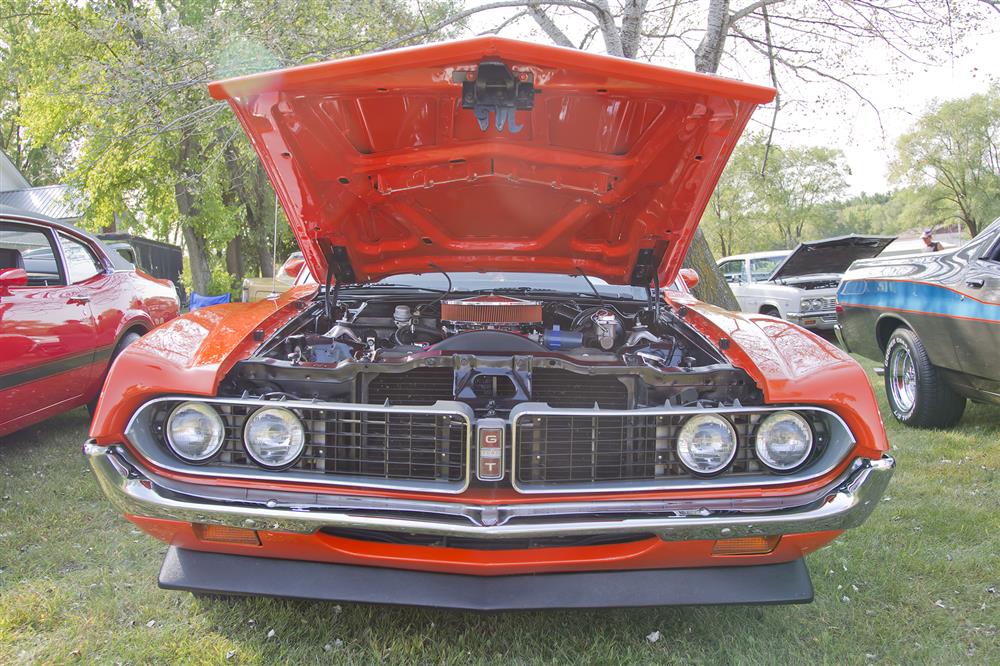
Additionally, the Gran Torino had a distinctive exterior design, including a wider grille and more prominent luxurious chrome trim. The Gran Torino was aimed at affluent customers who wanted a stylish, high-performance car with a higher level of comfort and luxury.
The Ford Torino was well-received by critics and consumers throughout its production. It was widely regarded as a stylish and affordable car with excellent price value. In recent years, it has gained a cult following and is now considered a classic car by many enthusiasts. The Torino's popularity peaked in the 1970s when the car was featured in several movies and television shows, further cementing its place in popular culture. Despite its discontinuation, the Ford Torino remains a popular choice among car enthusiasts and collectors, who appreciate its style, performance, and affordability.
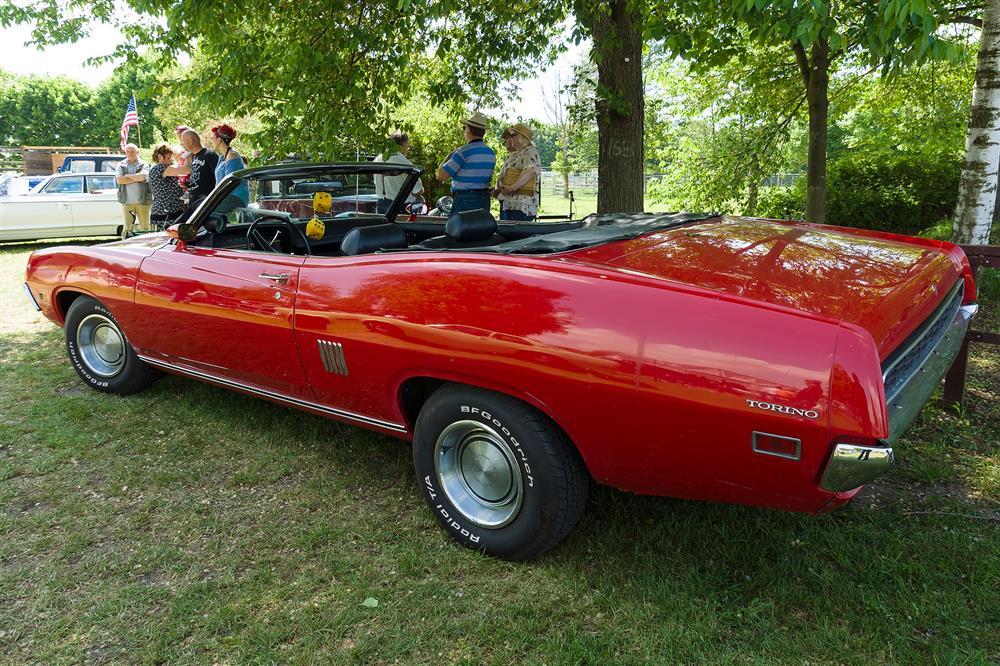
Have you ever owned a classic Ford Torino? We carry all the AC parts to repair and restore your Ford Torino. Click here to see parts in stock!
Ken shares with us his Mercury Cougar:
"This car is a father and son project we've been working on for the past five years. It's something we both enjoy doing together. We pulled the motor and transmission and had them professionally rebuilt. We had an AC compressor repaired by Original Air so the car keeps its originality. The car can be driven anywhere and looks great at car shows."
Original Air components are the compressor, expansion valve, and suction valve.



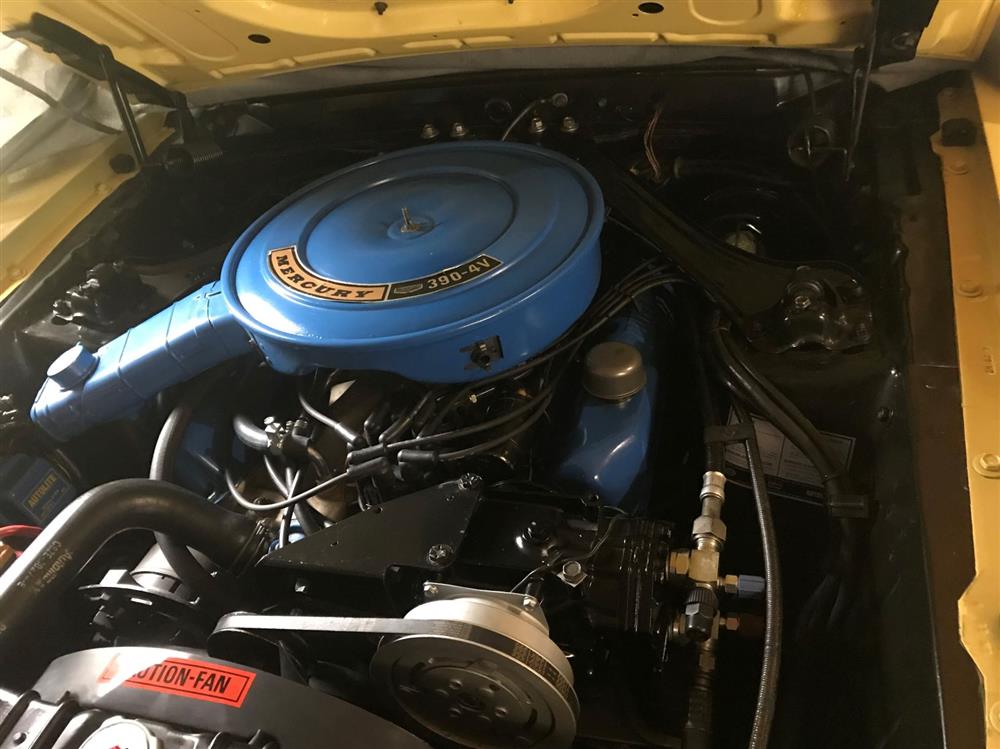
What do you think? Would you be up for restoring a classic Mercury Cougar? If so, here is a link to some of our kits.
One of the most common causes of failure and continued failure in your car’s air-conditioning system is an internal contaminant. Once an air-conditioning system is contaminated, it spreads throughout the air-conditioning system via the lubricant that is designed to protect the compressor, contaminating the lubricant and causing premature component failure.
The contaminant can be a combination of old and/or new oil, grease, rust and corrosion that can accumulate in the a/c system, typically due to years of improper servicing. While there are many causes of contamination in an automotive a/c system, the most common source is neglecting to replace the filter-drier (or accumulator) each and every time the system is open to the atmosphere or properly flushing a system after a compressor failure.

WHAT HAPPENS IF I DON’T CHANGE MY FILTER-DRIER OR ACCUMULATOR?
The filter-drier has two main functions:
The first is to remove moisture from the inside of the system. Desiccant within the filter-drier (or accumulator) is designed as a one-time moisture removal tool. The system must remain moisture-free, as moisture combined with refrigerant and lubricant will ultimately turn acidic and slowly start eating up the system from the inside. The result of this is a contaminant that blends in with oil and circulates through the system.
Next, the second is to filter out larger contaminants. Like the desiccant bag, the filter is a one-time filter of larger debris within the air-conditioning system. In a properly maintained system, there is little to filter, but components wear over the years, and the filter helps to prevent debris from circulating throughout the system. Filters can ultimately become saturated and clogged with debris, causing a blockage and commonly, compressor failure.
WHAT HAPPENS IF I DON’T PROPERLY FLUSH THROUGH MY A/C SYSTEM?
Many people, mechanics included, assume that simply changing a failed component and the filter-drier is all that’s necessary to solve their problem. That could not be further from the truth.
Installing a new filter-drier without cleaning out the rest of the system is like changing your car’s oil filter without changing the oil. Your car’s air-conditioning will be right back where it started, and your newly installed parts will also be contaminated, warranty voided. Dirty oil can still seep through the filter-drier and continue to circulate through the system, coating and recoating the internals of hoses, condensers, evaporators and valves. (Those of you that have worked on old plumbing can get a clear picture.) Next stop, clogged expansion valve and/or filter-drier, seized compressor, etc. Rinse and repeat.
HOW DO I KNOW IF MY CAR’S A/C IS CONTAMINATED?
If you’ve had a major compressor failure, such as a seized compressor, then you can rest assured that your system is contaminated. Another common assumption of a contaminated system can be made if a system has been consistently “topped off” due to a leak. Outside of that, the first step is to see if you can get anything out of any component that’s being replaced.
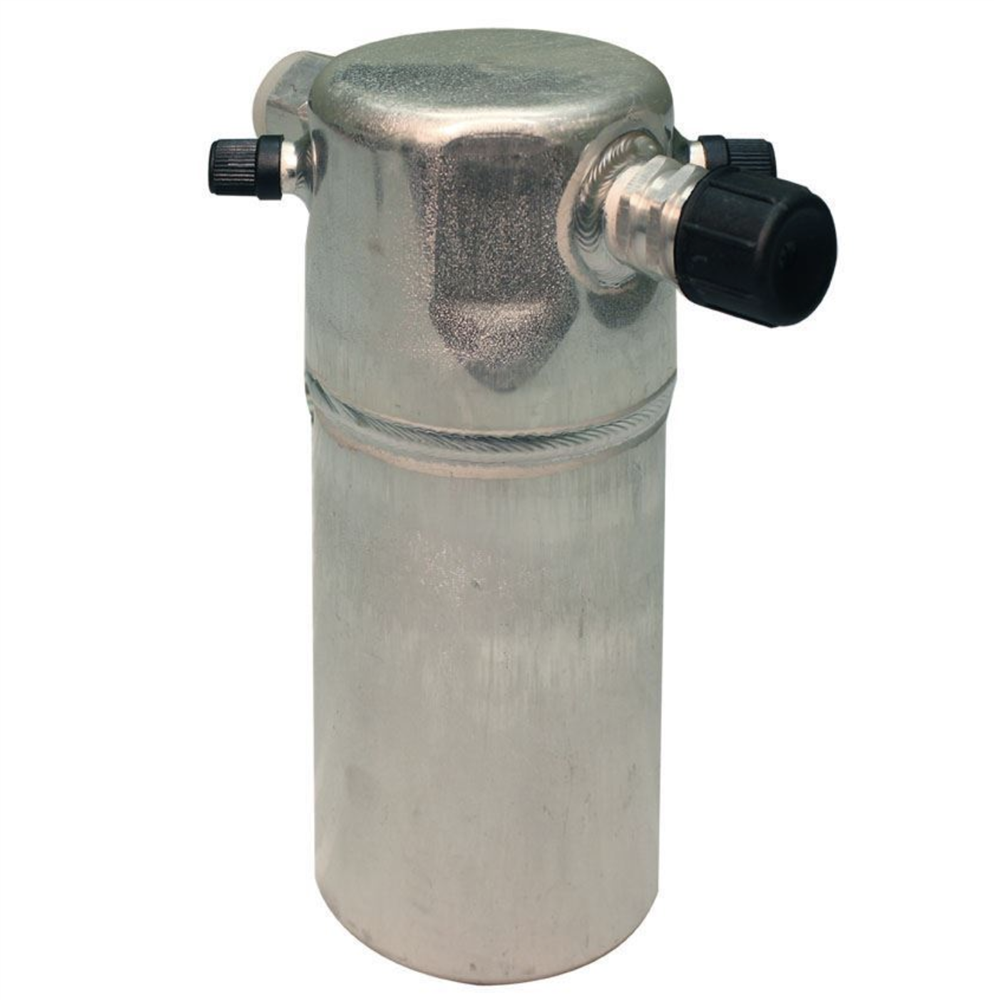
For example, if your compressor was leaking and it’s being replaced, drain the oil. If it’s transparent clear or yellow, with nothing floating around in it, there’s a good chance the rest of the system is in about the same condition. The odds are adding back the same amount of oil you removed from the system, changing your filter-drier (or accumulator, if so equipped), evacuating and recharging the system will get you back up and running.
If the oil removed is dark in color or has anything floating in it, you can rest assured the system is going to require a liquid flush. This cannot be done with the system fully assembled. Instead, this should be done with each part individually to ensure that not only the contaminant but the flushing agent is fully flushed out of the system. Once completed, replace any o-rings, add a full charge of oil, replace the filter-drier (or accumulator, if so equipped), evacuate, recharge the system and you should be cool again!
As classic muscle cars continue to increase in price, motor heads are looking for other opportunities to jump into the hobby at an affordable price. One of those desired cars are the GM G-body cars from the mid-80s. These cars were very popular and were marketed as the Buick Regal, Chevrolet Monte Carlo, Oldsmobile Cutlass Supreme and the Pontiac Grand Prix.
.jpg)
If you didn’t know, the G-body designation was actually previously used for the 69-72 Pontiac Grand Prix and 70-72 Chevy Monte Carlo before they were rolled back into the A-body. There were some variations before the official G-body roll out in 1982, with the familiar body lines and style lasting until approximately 1987 (the Monte Carlo carried it until 1988).
Of all the G-bodies, the most revolutionary and sought-after model is the Buick GNX. The Buick Grand National came out in 1982 and were originally painted charcoal gray. In 1984, the Grand National came in black and was 200hp of turbocharged V6 performance with sequential fuel injection. By 1986, the Grand National was making 235hp, and with some modifications could easily outperform V8 cars of the day. All of this led to the limited production GNX for 1987 with close to 300hp and over 400 lb ft of torque. Today, it’s not unusual for Buick Grand National GNX’s to go for more than 200K at auction.
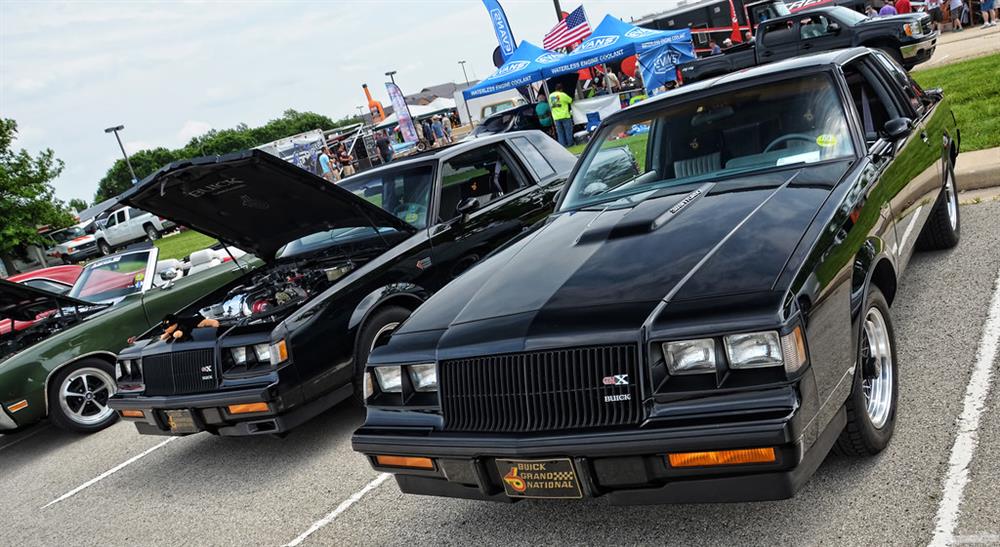
Back to affordable G-bodies, there are many variations from the base models for consideration. The Monte Carlo SS with extra body cladding or the one with the unusual back window, the Regal T-Type from 1983, the Chevy El Camino SS from 82-87, or the Hurst Olds from 83-84. The difficult part is finding one that hasn’t spent years under a tree or has been extremely neglected.
Pricing for G-bodies use to be under 10K just five years ago. Prices in 2022 are reaching 20K for fair to good cars, with nicer cars going for over 20K USD. Additionally, the number of cars to shop from continue to decline as many end up either parted out or junked.
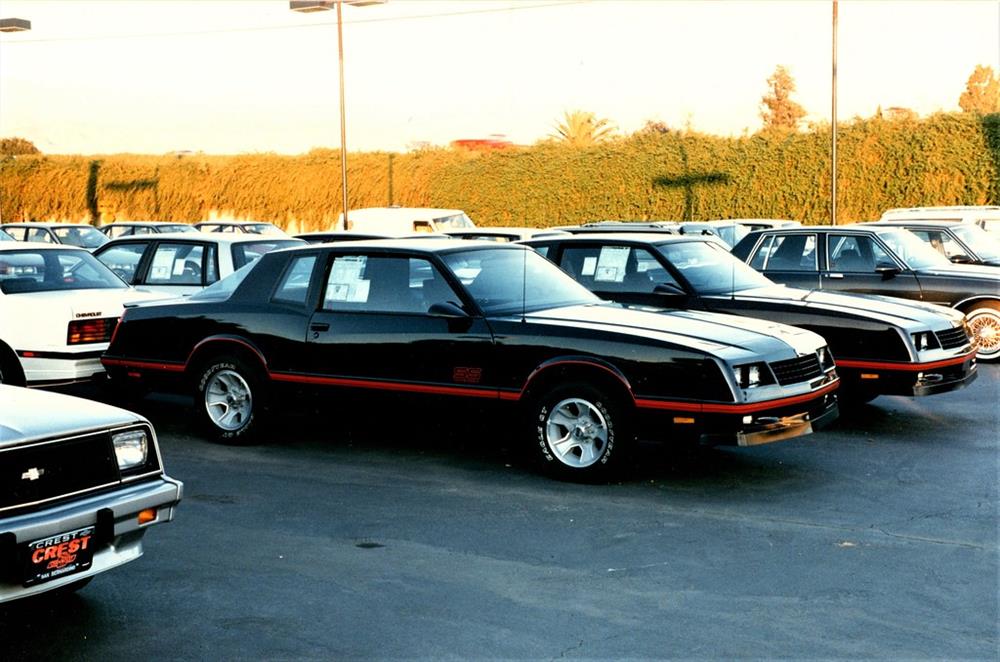
If you plan on getting a G-body, and you do find one and the air conditioning is not working, then just hit us up. We carry all the AC parts needed to get the factory AC working on it again and give your G-body a second chance to cruise in comfort.
Pieter shares with us his 1978 Ford Bronco with upgraded AC:
Purchased my 1978 Ford Bronco from a Kansas farmer about 15 years ago. I always wanted this Bronco when in high school. I finally got one! I restored it over many years and finally got my AC working with Original Air's Factory kit. The kit that fit perfectly and so well designed. Easy install and now blowing nice and cold here in Tennessee.

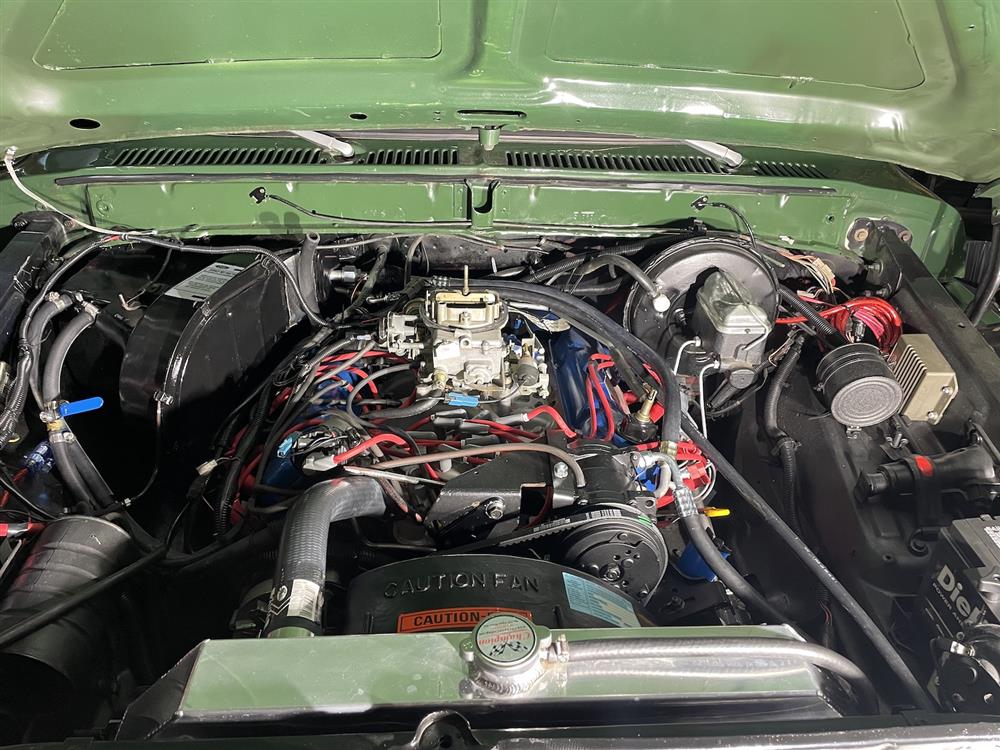
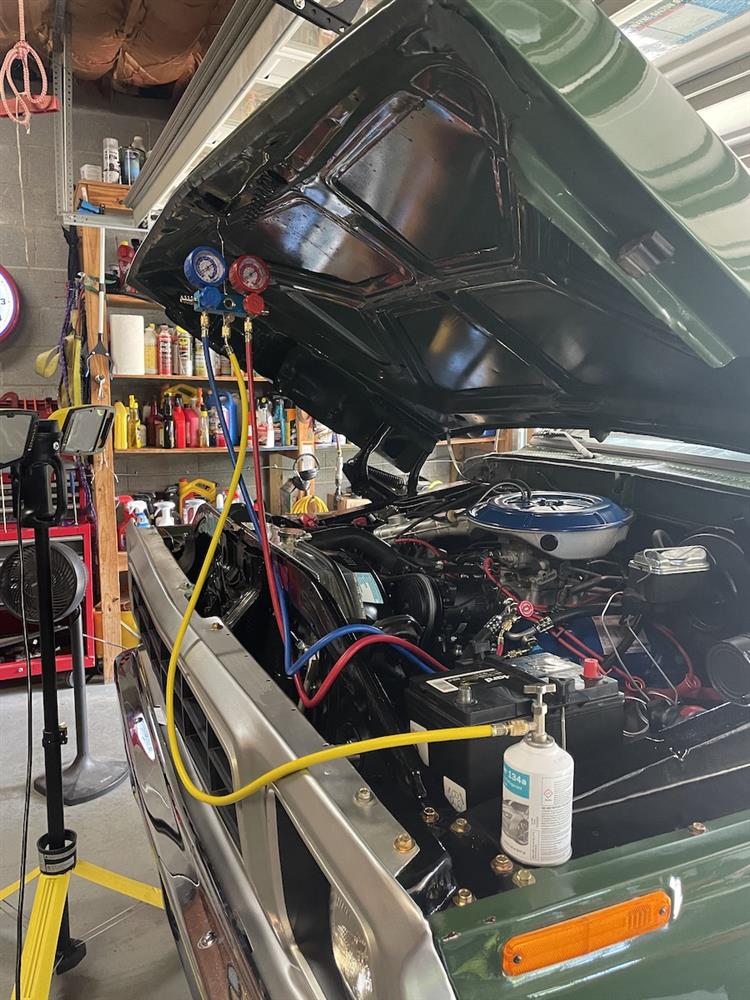
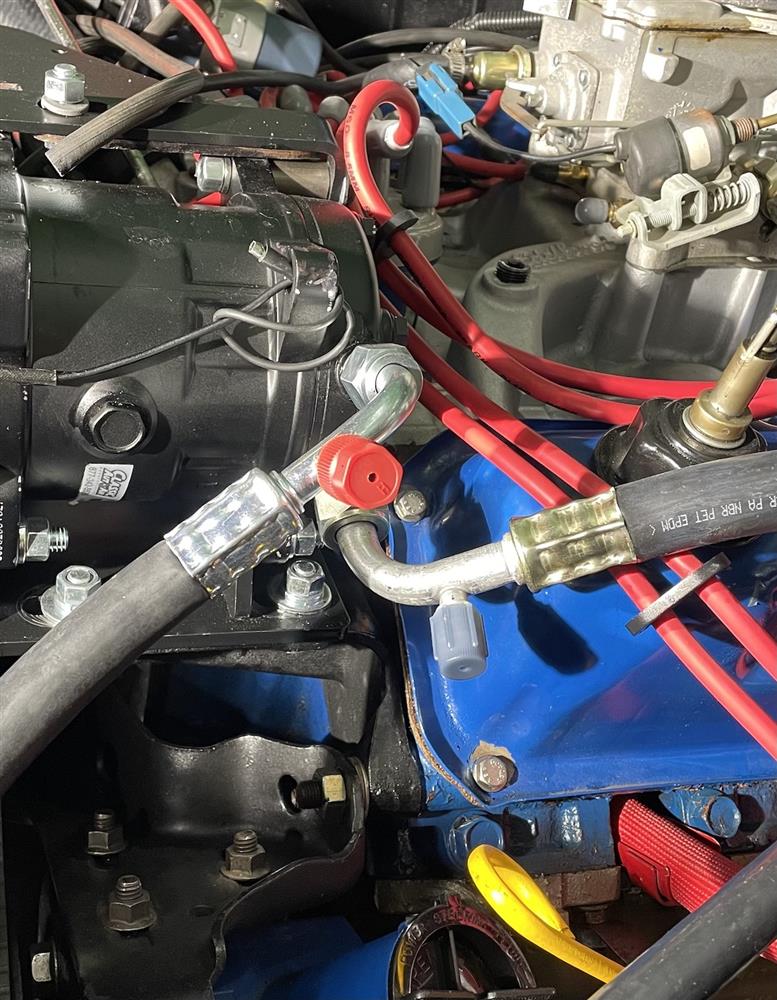
Do you have a classic Ford Bronco that you are working on? If so, check out our parts here: FORD BRONCO AC PARTS
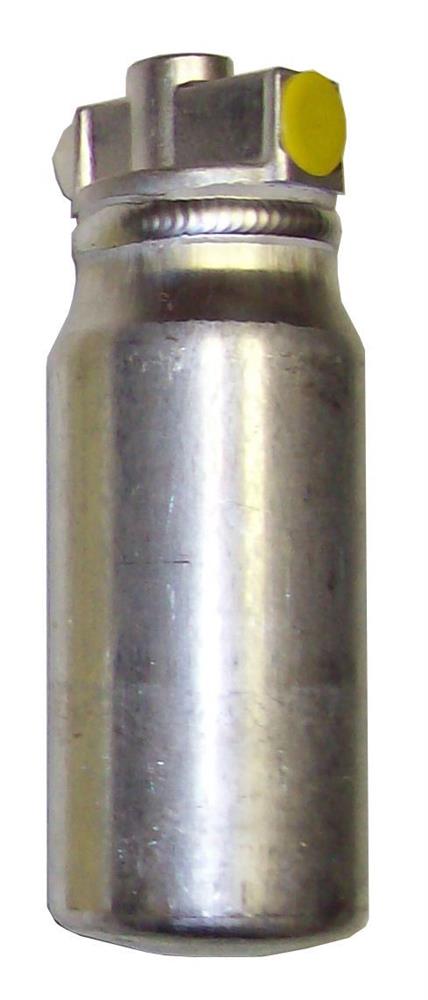
Owning a classic car requires dedication to maintenance simply due to the aging of various parts on the vehicle. When it comes to the maintenance of your factory AC system, questions regarding AC part replacement on daily driven classics versus stored classics arises often. One part that you may, or may not have considered is the replacement of your AC drier.
An AC drier’s function is to act as a temporary storage area for refrigerant and oil in the AC system during periods of low need, such as when the car has reached the correct temperature and the vent fans are running on low. Inside the AC drier there is desiccant material. The desiccant material functions to absorb moisture that may be in the AC system, usually introduced during servicing. Additionally, moisture in the air, such as in high humidity regions can seep into the system. Once the drier reaches it’s maximum ability to absorb moisture, it is no longer effective and will need replacement.
Anytime you are opening the entire system, as during a restoration or just to replace a hose, it is highly recommended to replace the AC drier. When the air conditioning system components are exposed directly to air, the drier desiccant immediately begins to absorb moisture. If your AC drier is an original component, 30+ years of function may be heavily degraded which can lead to corrosion in the system and degrade the compressor’s lubricating oil performance.
So if you plan to do work on your factory AC system that involves replacing a part that exposes the system to air, plan to purchase a new AC drier. Some companies require that the AC drier is replaced when changing or upgrading the compressor to have a valid warranty.
Have you changed your AC drier on your ride? Is your drier the original one from the factory?
If you have ever ridden in a hybrid or electric vehicle, you probably never noticed that the air conditioning system was fully electric. Just like the changes to power steering, belt-driven components in vehicles have been replaced by fully electric components. One of the questions that come up often is can you replace your existing air conditioner compressor with an electric one?
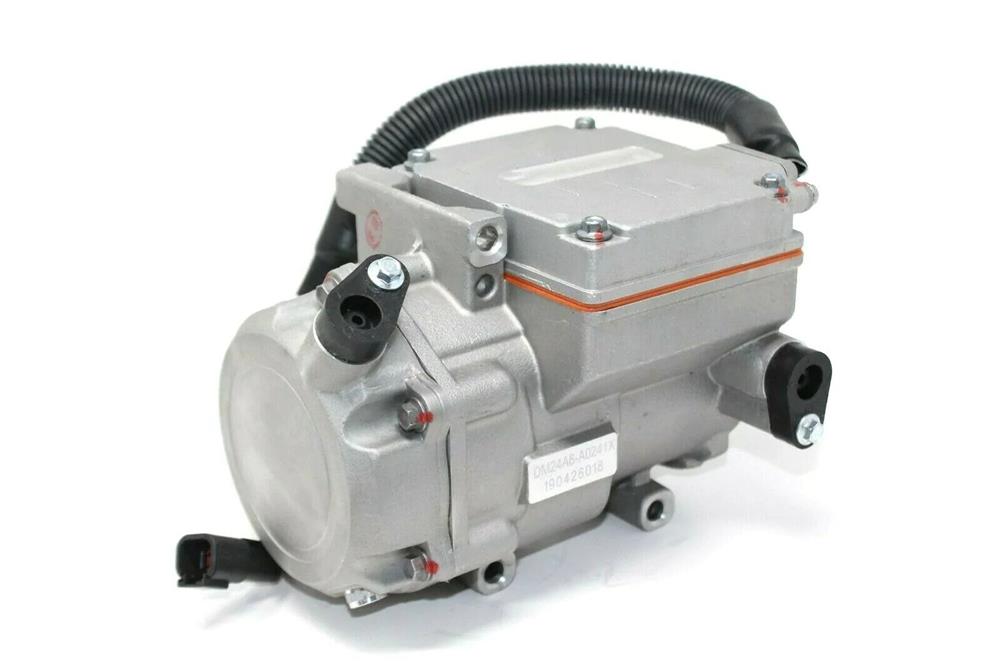
Let’s start with the electric AC compressor. For almost 20 years, electric AC compressors have been used in hybrids, fully electric and some gas-powered cars. When the start-stop function became an option, there had to be an ability to keep the air conditioning system operating. It would be miserable pulling up to a stop light on a hot summer day and have the cooling suddenly stop to save fuel. Removing the dependency on engine power to drive the compressor with a belt led to development of the electric air conditioning compressor, which could possibly lead to reducing load on the engine and improving horsepower and efficiency.
If an electric AC compressor is efficient and can promote more horsepower, why can’t I switch my existing compressor in my factory air equipped classic car from belt driven to electric? Well, it’s a bit more complicated and the primary factor has to do with the power requirements. An electric AC system has traditional components such as the evaporator, condenser, etc., with an AC compressor operating off 3-phase power. To manage the electric AC compressor function, a dedicated controller is required and a larger power system is required beyond the stock 12V battery in the vehicle.
Yes, you could convert to an electric AC system, but the costs may be prohibitive. The extra weight of the larger battery and the integration of a dedicated controller system negates the efficiency and horsepower benefits of converting to a fully electric AC system. A Sanden compressor for comparison is just as efficient and more effective as it can be mounted in the factory location with very few adjustments.
Do you currently have a vehicle with an electric AC compressor? Would you attempt to do a conversion on your classic vehicle?
- 2023
- 2022
- 2021
- 2020
- 2019
- 2018
- 2017
- 2016
